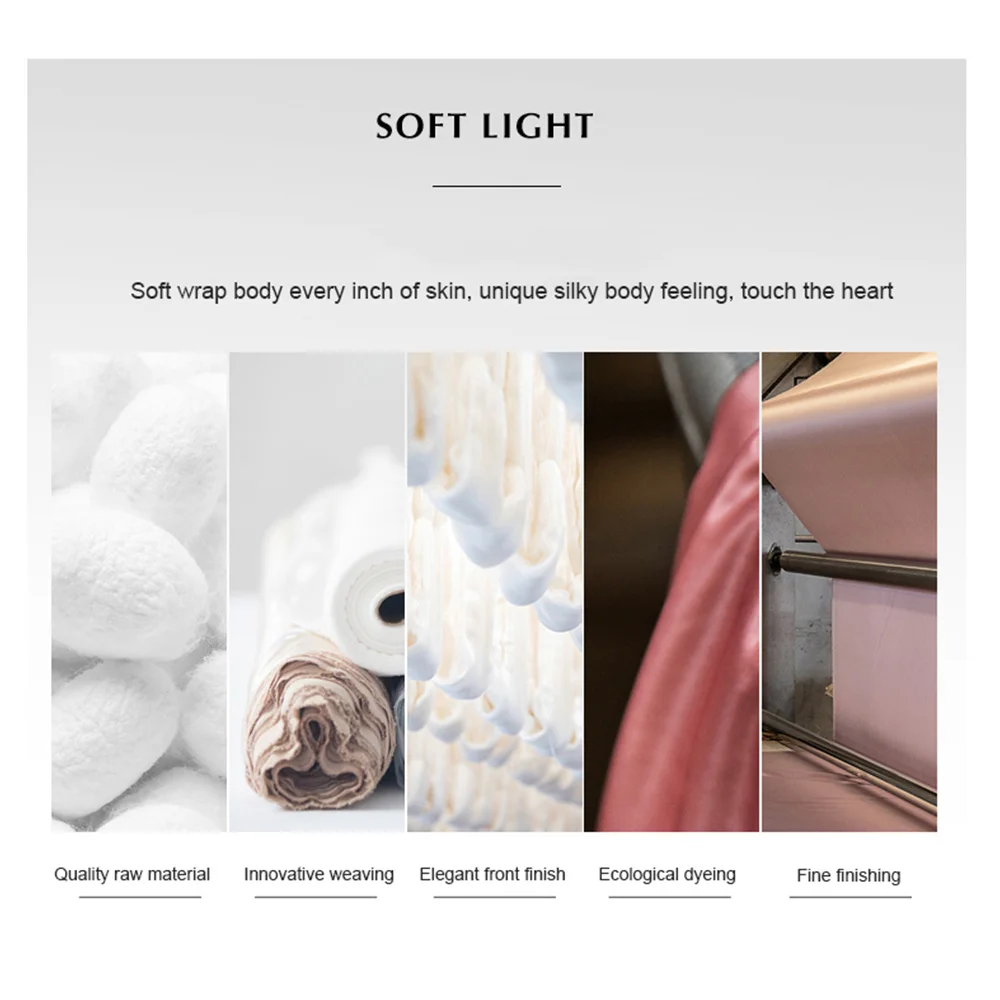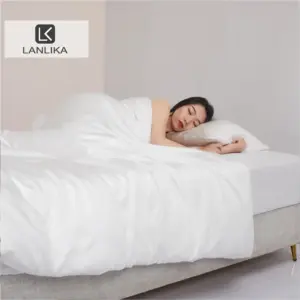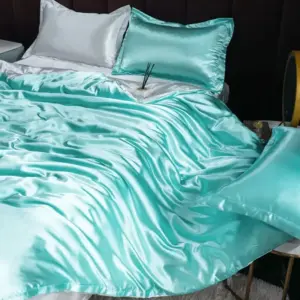Understanding Silk Duvet Sizing for King and Queen Beds
Silk duvets offer a unique sleeping experience that differs significantly from traditional down or synthetic options. The inherent properties of silk—its lightweight nature, exceptional drape, and natural temperature regulation—create special considerations when choosing the right size for your bed.
Unlike heavier down or synthetic alternatives, silk duvets typically weigh 30-40% less while providing equivalent warmth. This lighter weight affects how the duvet drapes over your bed and how it feels during sleep. The natural flow and elegant drape of silk create a distinctly luxurious appearance that’s worth considering in your sizing decisions.
Key points to understand about silk duvet sizing:
- Silk’s natural drape means it conforms differently to your bed compared to fluffier materials
- The lightweight nature can make a silk duvet feel less substantial, sometimes leading people to choose larger sizes
- Proper sizing ensures both aesthetic appeal and functional comfort
- What’s considered “standard sizing” varies significantly between manufacturers and regions
Finding the perfect fit for your queen vs king silk bedding involves understanding these unique properties alongside standard dimensional guidelines.
Standard Silk Duvet Dimensions by Region
When shopping for a silk duvet, it’s essential to understand that “king” and “queen” sizes vary considerably depending on where you live or where the manufacturer is based. Here’s a comprehensive breakdown of standard dimensions across major regions:
United States Standard Duvet Sizes
| Size | Dimensions (inches) | Dimensions (cm) |
|---|---|---|
| King | 106 × 90 | 269 × 229 |
| California King | 102 × 88 | 259 × 223 |
| Queen | 90 × 90 | 229 × 229 |
United Kingdom Standard Duvet Sizes
| Size | Dimensions (inches) | Dimensions (cm) |
|---|---|---|
| Super King | 90 × 87 | 230 × 220 |
| King | 78 × 87 | 200 × 220 |
| Queen/Double | 78 × 79 | 200 × 200 |
European Standard Duvet Sizes
| Size | Dimensions (inches) | Dimensions (cm) |
|---|---|---|
| King | 87 × 79 | 220 × 200 |
| Queen | 78 × 79 | 200 × 200 |
Australian Standard Duvet Sizes
| Size | Dimensions (inches) | Dimensions (cm) |
|---|---|---|
| King | 94 × 87 | 240 × 220 |
| Queen | 86 × 87 | 210 × 210 |
It’s important to note that these dimensions refer to the actual duvet measurements—not mattress dimensions. Typically, duvets are designed to be larger than their corresponding mattresses to allow for comfortable overhang and drape.
Some manufacturers offer “oversized” options that provide extra coverage—particularly beneficial for thicker mattresses or couples who tend to pull covers during sleep. These oversized variants might add an extra 4-12 inches (10-30 cm) to standard dimensions.
Understanding the differences between king and queen silk sheet comparison can also help inform your duvet decisions, as coordinating sizes creates a harmonious bedding setup. For a complete bedding solution, exploring our king size silk bedding sets provides options with properly matched components.
Understanding Duvet Overhang and Drape
The perfect silk duvet not only covers your mattress but extends beyond it to create an aesthetically pleasing overhang. This overhang—often called “drop” or “drape”—plays a crucial role in both appearance and functionality.
Silk’s natural draping quality creates a distinctly elegant appearance compared to other materials. While down tends to create a puffy, cloud-like effect, silk offers a more sophisticated, smooth cascade along the sides of your bed. This unique draping quality should influence your sizing decisions.
For most bed setups, the ideal overhang measurements are:
* 6-8 inches (15-20 cm) on each side of the bed
* 6-8 inches (15-20 cm) at the foot of the bed
* Minimal overhang at the head (if using a headboard)
However, these guidelines should be adjusted based on your bed configuration:
Platform beds typically look best with a more substantial overhang, sometimes extending to 10-12 inches (25-30 cm) to create a balanced appearance with the lower profile.
Traditional frames with box springs may need less overhang, as the total height is already elevated.
Your mattress thickness dramatically impacts how your duvet appears and functions. For example:
* A 15-inch (38 cm) pillow-top mattress effectively “consumes” several inches of duvet width compared to a 9-inch (23 cm) mattress
* Thicker mattresses often benefit from sizing up your duvet to maintain adequate side coverage
For a comprehensive selection that accounts for these considerations, browse our queen size silk bedding sets designed with proper proportions in mind.
Key Factors When Choosing Your Silk Duvet Size
Making the right size selection involves several critical considerations that go beyond simply matching your mattress label. Here are the essential factors to evaluate:
Mattress Dimensions
* Start with precise measurements of your mattress width, length, and height
* Remember that a “queen” mattress is typically 60 × 80 inches (152 × 203 cm)
* A “king” mattress is typically 76 × 80 inches (193 × 203 cm)Bed Frame Style
* Platform beds with visible sides benefit from longer drops (8-12 inches/20-30 cm)
* Beds with footboards may require shorter foot overhang
* Sleigh beds or beds with tall side rails may need custom sizing considerationsSleeping Habits
* Active sleepers who move frequently benefit from 8-12 inches (20-30 cm) of extra width
* Couples who sleep with distance between them need more width than those who sleep closer
* If one partner frequently “steals” covers, consider sizing upDuvet Cover Compatibility
* Ensure your duvet and cover are compatible sizes
* A slightly larger cover (1-2 inches/2.5-5 cm) allows easier insertion of the duvet
* Too large a cover will cause bunching and shiftingSilk Fill Properties
* Silk naturally drapes closer to the body than loftier fills
* The momme weight (fabric density) affects the duvet’s drape
* Higher momme weights (22-25) create a slightly heavier drape than lighter options (19-21)
For example, if you have a queen mattress measuring 60 × 80 × 12 inches (152 × 203 × 30 cm), you might prefer a duvet that’s at least 86 × 90 inches (218 × 229 cm) to allow for proper overhang considering the mattress height.
These considerations align with broader decisions about choosing between king and queen silk sets, where factors like room size and sleeping habits play important roles.
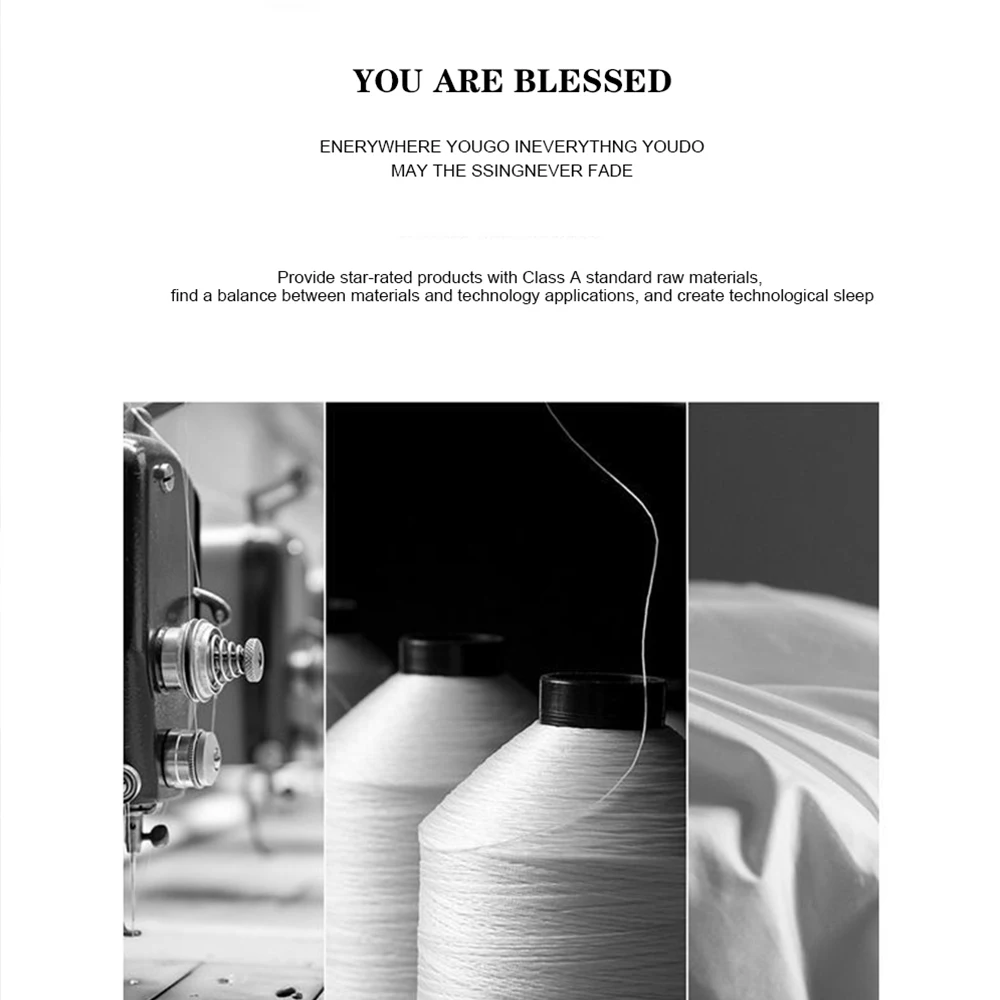
Step-by-Step Guide to Measuring for Your Silk Duvet
To ensure you select the perfect silk duvet size, follow these precise measurement steps:
Measure your mattress dimensions
* Use a tape measure to find the exact width and length
* Measure the height/thickness from the base to the top surface
* Write down all measurements for referenceDetermine your desired overhang
* For typical aesthetics: 6-8 inches (15-20 cm) on each side
* For extra coverage: 10-12 inches (25-30 cm) on each side
* Consider bed height and room size when decidingCalculate your ideal duvet dimensions
* Add your desired overhang to both sides of your mattress width
* Add your desired overhang to the foot of your mattress length
* Example: For a queen mattress (60 × 80 inches) with 8-inch overhang:- Width: 60 + 8 + 8 = 76 inches
- Length: 80 + 8 = 88 inches
Measure your existing duvet or cover (if applicable)
* Lay the duvet flat on the floor
* Measure from edge to edge in both directions
* Note any discrepancies from manufacturer’s stated dimensionsAccount for silk’s unique properties
* Add 1-2 inches (2.5-5 cm) to your measurements for silk’s natural loft
* Remember that silk has less puffiness but excellent drape
Common measurement mistakes to avoid:
* Forgetting to include mattress height in your calculations
* Measuring a duvet while it’s on the bed (inaccurate)
* Not accounting for compression at fold points
For more comprehensive guidance on creating the perfect bedding arrangement, our ultimate guide to silk sheet and duvet layering offers additional insights.
When to Choose King vs. Queen Silk Duvet
Deciding between king and queen sizes isn’t always straightforward—sometimes the best choice isn’t simply matching your mattress size. Consider these scenarios:
| Scenario | Recommended Size | Reasoning |
|---|---|---|
| Standard queen mattress, minimal overhang desired | Queen duvet | Creates a clean, tailored appearance with 6” overhang |
| Queen mattress with thick pillow-top | King duvet | Compensates for height, providing adequate side coverage |
| Queen mattress, active sleepers | King duvet | Extra 16” width prevents cover-stealing and exposure |
| King mattress, minimal bedroom space | King duvet | Standard match with appropriate coverage |
| King mattress, spacious room | Oversized king | Creates luxurious draping effect to fill visual space |
| California king mattress | Cal king or oversized king | Accommodates extra length of Cal king mattress |
When a standard queen size is ideal:
* For guest rooms with limited use
* When paired with thin to medium mattresses (under 12”/30 cm)
* For sleepers who remain relatively still
* In smaller bedrooms where excess fabric might look overwhelming
When to consider upsizing to a king duvet for a queen bed:
* For couples who frequently pull covers
* With extra-thick mattresses (over 12”/30 cm)
* To create a more luxurious, hotel-like appearance
* When using decorative folding techniques that consume extra fabric
For two adults who tend to pull covers, a king duvet on a queen bed offers approximately 16 extra inches (40 cm) of width, significantly reducing nighttime cover struggles.
Our luxury silk bedding sets collection includes options for all these scenarios, allowing you to prioritize either aesthetic preference or functional needs.
Regional Sizing Variations and Manufacturer Differences
When shopping for silk duvets internationally or across different brands, be aware that sizing terminology can be surprisingly inconsistent. What one manufacturer calls “queen” might be closer to another’s “full” or even “king” in some cases.
Key regional variations to note:
- North American “queen” duvets are typically square (90 × 90 inches/229 × 229 cm), while European queens are rectangular
- UK “super king” approximates a US standard king
- Australian sizes often run larger than their US counterparts
- European duvets generally use a different sizing system altogether (135, 155, 200, etc.)
Some brands consistently deviate from standard sizing:
* Luxury hotel collections often run 2-4 inches (5-10 cm) larger than retail standards
* Budget brands may run 2-3 inches (5-7.5 cm) smaller than stated dimensions
* Artisanal or handmade duvets may have slight variations in every piece
Always check the specific centimeter or inch measurements rather than relying solely on size names like “queen” or “king.” A true “queen” can vary by up to 6 inches (15 cm) between different manufacturers.
When purchasing internationally, convert measurements to your familiar system and compare with your ideal dimensions rather than trusting size names alone.
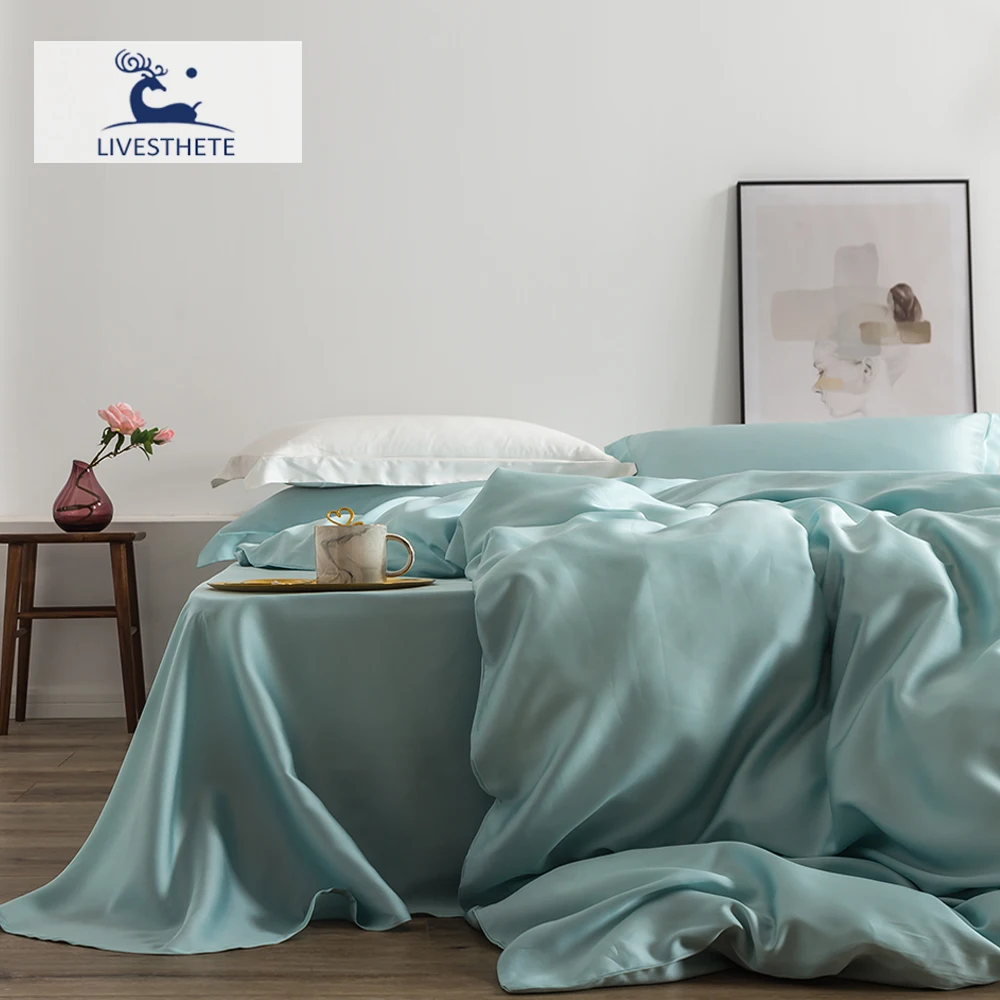
Common Silk Duvet Sizing Mistakes to Avoid
Even careful shoppers frequently encounter these silk duvet sizing pitfalls:
Underestimating mattress depth’s impact: A 12-inch (30 cm) mattress with a standard UK queen duvet can leave sides with only 2 inches (5 cm) of coverage, creating an awkward, poorly fitted appearance.
Assuming all “king” or “queen” labels mean the same thing: Without checking specific measurements, you might receive a duvet significantly smaller or larger than expected.
Mismatching duvet and cover dimensions: A duvet that’s larger than its cover will bunch uncomfortably; one that’s too small will shift and leave empty corners.
Ignoring personal sleeping preferences: A standard-sized duvet might be technically “correct” but still inadequate for active sleepers who need extra coverage.
Overlooking silk’s unique draping properties: Silk creates a different visual effect than down or synthetic—it lies flatter and creates a more refined drape, which some mistake for being “too small.”
Focusing only on width and length: Forgetting to consider the loft or height of the silk fill can lead to a duvet that feels too flat or too bulky for your preferences.
Not accounting for shrinkage in duvet covers: Even if your silk duvet maintains its size, cotton or linen covers may shrink slightly with washing, affecting the overall fit.
For those with specialty sizing needs, our California king silk fitted sheets collection demonstrates how attention to exact dimensions creates a perfect fit.
Care Considerations to Maintain Silk Duvet Size and Shape
One of silk’s remarkable advantages is its dimensional stability—with proper care, a quality silk duvet will maintain its size and shape far better than many alternatives. To preserve your duvet’s perfect fit:
- Silk naturally maintains its shape with minimal care—it has approximately 0.5% shrinkage potential compared to cotton’s 3-5%
- Follow manufacturer cleaning instructions precisely—typically dry cleaning or specialized silk washing
- Air and gently fluff your duvet regularly rather than aggressively shaking
- Store flat or loosely rolled rather than compressed in small spaces
Tips for maintaining loft and shape:
* Rotate your duvet monthly to distribute wear evenly
* Use a slightly oversized duvet cover to prevent compression
* Air your silk duvet in indirect sunlight quarterly to refresh the fibers
* Avoid folding along the same lines repeatedly to prevent permanent creasing
While the silk fill itself is remarkably stable, duvet covers (especially cotton or linen) can shrink up to 5% with improper washing, effectively making your duvet appear smaller. Always wash covers according to their specific care instructions.
For more detailed guidance on maintaining proper dimensions, explore our guide to understanding silk bedding sizes which covers long-term care techniques.
Frequently Asked Questions About Silk Duvet Sizing
Can I use a king silk duvet on a queen bed?
Yes, using a king duvet on a queen bed is quite common. The extra width (approximately 16 inches/40 cm) provides additional coverage for couples and creates a more luxurious appearance with generous draping. Just ensure your bedroom has enough space to accommodate the extra fabric.
Do silk duvets feel bigger or smaller than other materials?
Silk duvets typically feel lighter and less bulky than down or synthetic options of the same size. Their natural drape creates a closer conforming appearance rather than the puffy, voluminous look of down. This can sometimes make them appear smaller visually, though the actual dimensions are the same.
What is the ideal duvet overhang for my bed?
The ideal overhang depends on your bed style, but generally, 6-8 inches (15-20 cm) on the sides and foot creates a balanced look. Platform beds benefit from 8-12 inches (20-30 cm) of drop, while beds with box springs look proportional with 6-8 inches (15-20 cm).
How do I ensure my silk duvet doesn’t shift inside the cover?
Use a duvet cover with internal ties that match corner loops on your duvet. If these aren’t present, you can sew small fabric loops to your duvet corners and use safety pins to secure them to the cover. Choosing a cover that’s only 1-2 inches (2.5-5 cm) larger than your duvet also minimizes shifting.
Are there sizing considerations for adjustable beds?
For adjustable beds, consider a slightly wider duvet to accommodate the bed’s articulation. When the bed is adjusted to sitting positions, extra width ensures coverage isn’t compromised. Additionally, separate twin XL duvets might be preferable to a single king for split adjustable bases.
For more comprehensive information about selecting the right size for your needs, our queen and king silk bedding guide provides detailed comparisons and recommendations.
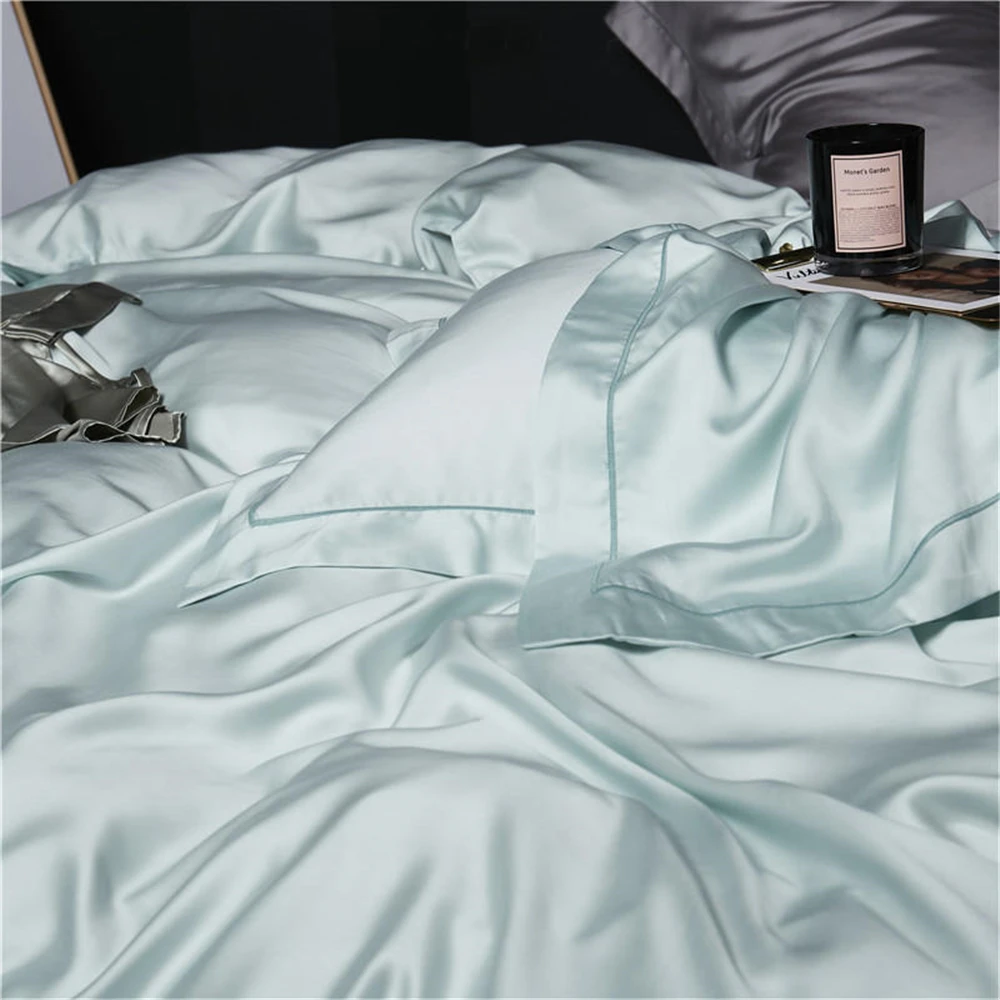
Specialty Silk Duvet Sizing Options
Beyond standard king and queen options, several specialty sizing solutions address unique sleeping arrangements:
Custom sizing for antique beds or non-standard mattresses can be ordered with exact measurements to ensure perfect fit. These typically cost 15-30% more than standard sizes but provide ideal coverage.
Split duvets offer an excellent solution for couples with different temperature preferences. These come as two twin-sized duvets (typically 39 × 80 inches/99 × 203 cm each) that can have different warmth levels while maintaining a cohesive look.
All-season or layered silk duvets feature multiple layers that can be attached or detached as needed. When purchasing these, remember that the combined thickness may require a slightly larger duvet cover.
Children’s silk duvets are proportionally designed for smaller beds, typically measuring 60 × 80 inches (152 × 203 cm) for a twin size, with the same quality and benefits as adult versions.
California King Silk Fitted Sheet, King Size Silk Fitted Sheet, Mulberry Silk Fitted Sheet, Queen Size Silk Fitted Sheet
Price range: $120.04 through $390.79 Select options This product has multiple variants. The options may be chosen on the product page100% Silk Sheets, Green Silk Sheets, King Size Silk Bedding Set, Mulberry Silk Bedding Sets, Queen Size Silk Bedding Set
Price range: $1,246.21 through $1,615.22 Select options This product has multiple variants. The options may be chosen on the product pageFull Silk Bedding Set, King Size Silk Bedding Set
Price range: $120.99 through $190.49 Select options This product has multiple variants. The options may be chosen on the product page100% Silk Sheets, King Size Silk Bedding Set, Mulberry Silk Bedding Sets, Queen Size Silk Bedding Set, White Silk Sheets
Price range: $1,000.79 through $1,351.42 Select options This product has multiple variants. The options may be chosen on the product pageKing Size Silk Bedding Set, Twin Silk Bedding Set
Price range: $120.99 through $190.49 Select options This product has multiple variants. The options may be chosen on the product pageLuxury Silk Bedding Sets, Mulberry Silk Bedding Sets, Silk Sheet and Pillowcase Set
Price range: $61.33 through $159.87 Select options This product has multiple variants. The options may be chosen on the product page
Our Mulberry silk bedding sets include options for many of these specialty configurations, ensuring everyone can enjoy the benefits of silk regardless of bed size or sleeping preferences.
Matching Your Silk Duvet with the Right Cover
The relationship between your silk duvet and its cover is crucial for both appearance and functionality. A properly sized duvet cover enhances your silk duvet’s natural properties rather than fighting against them.
For optimal fit:
* Choose a cover that’s 1-2 inches (2.5-5 cm) larger than your duvet’s dimensions
* Avoid covers more than 2 inches (5 cm) larger, as excess fabric creates bunching
* Look for covers with corner ties that match loops on your duvet
Different cover materials interact uniquely with silk fill:
* Silk covers complement the natural drape of silk fill, creating the most elegant appearance
* Cotton covers add slightly more structure but may reduce some of silk’s natural temperature regulation
* Linen covers create textural contrast but need more frequent adjustment to maintain appearance
The weight of your cover material also affects the final appearance—heavier fabrics can partially suppress silk’s natural loft, while lightweight covers allow the silk to express its natural properties fully.
At Sanctuary Soft, we design our covers specifically to complement the dimensional properties of our silk duvets, ensuring they work together as a harmonious system rather than competing elements.

